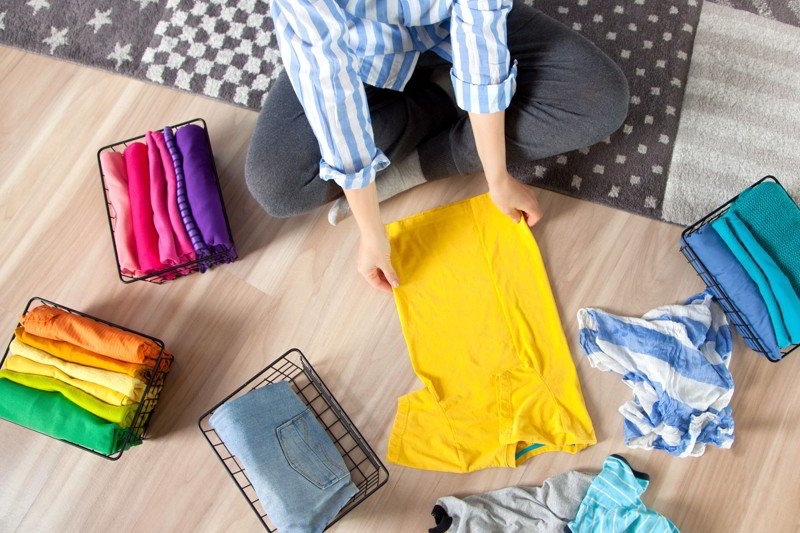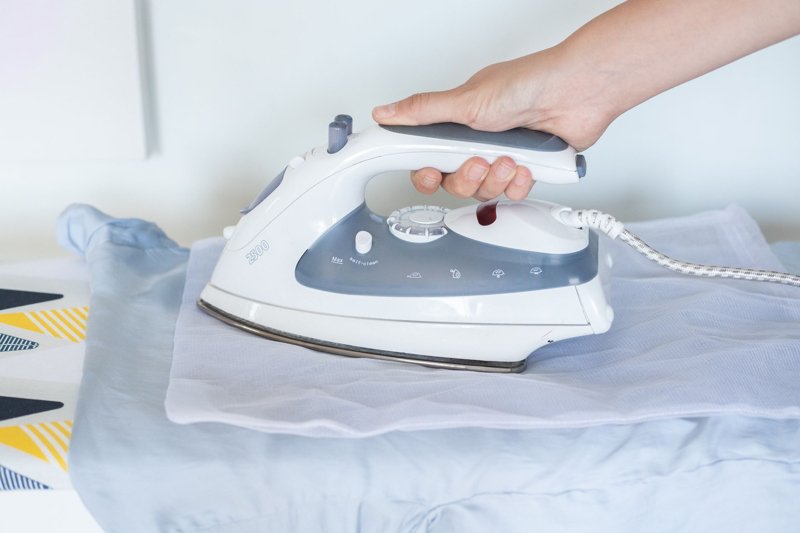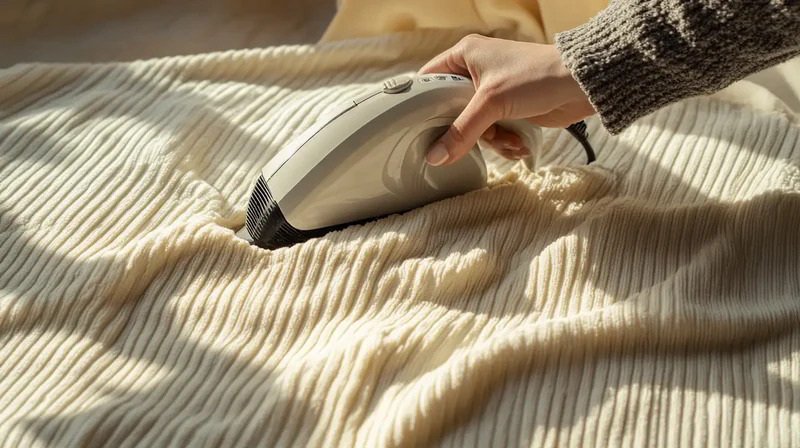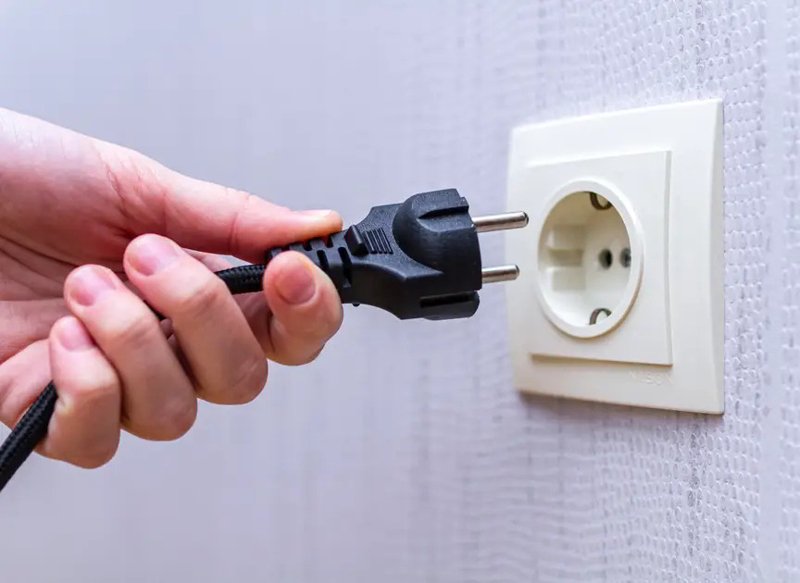How to Iron Different Fabrics: Settings & Tips Guide
Ironing can seem like a chore, and the fear of damaging clothes is real. Different fabrics react differently to heat, and using the wrong setting can lead to irreversible damage, from unsightly scorch marks to melted fibers. Achieving perfectly pressed clothes isn’t just about removing wrinkles; it’s about garment care.
This article provides the core knowledge to confidently iron various fabrics. You will gain a detailed understanding of iron settings, preparation techniques, and fabric-specific methods, ensuring your clothes stay in pristine condition.
1. Understanding your iron and ironing tools
Choosing the right tools and understanding how they work is the foundation of successful ironing. It’s not just about applying heat; it’s about applying the right heat in the right way.
1.1 Types of irons: Dry vs. steam
Irons come in two main varieties: dry and steam. Dry ironing uses heat alone to relax fabric fibers. These are perfect for delicate materials. Steam ironing, on the other hand, incorporates moisture. The steam penetrates the fabric, making it more pliable and speeding up wrinkle removal. Steam is beneficial for tougher fabrics. Steam has the advantage on more substantial materials like cotton and linen, while dry ironing is safe for delicate fabrics.
1.2 Key iron features and settings
Modern irons offer a range of features. The temperature dial is crucial, usually marked with fabric types or numbered settings. Match this setting to the garment’s care label. Steam control lets you adjust the amount of steam or turn it off completely.
The soleplate, the iron’s flat bottom, comes in various materials (aluminum, ceramic, stainless steel) affecting heat distribution and glide. Auto shut-off is a vital safety feature, turning off the iron if left unattended. These settings impact how fabrics respond to heat. Lower temperatures are for delicate items.
1.3 Essential ironing tools
Beyond the iron, several tools enhance the process:
- Ironing board: provides a stable, heat-resistant surface.
- Pressing cloth: a piece of fabric (usually cotton or muslin) placed between the iron and the garment to prevent scorching and shine, especially on delicate fabrics.
- Spray bottle: used to lightly dampen fabrics, making wrinkle removal easier.
- Distilled water: using distilled water in steam irons is critical. Tap water contains minerals that can build up inside the iron, blocking steam vents and potentially spitting onto clothes.
- Starch: optional, but starch adds crispness and helps clothes resist wrinkles.

2. Preparing to iron: Essential steps
Proper preparation is key to efficient and damage-free ironing. It’s not just about plugging in the iron; it’s about setting the stage for success.
2.1 Reading fabric care labels
The garment care label is your first point of reference. It provides vital ironing instructions, often using universal ironing symbols. These symbols indicate whether an item can be ironed, the recommended temperature (low heat, medium heat, high heat), and whether to use steam or dry clean only. Ignoring these instructions risks damaging the garment. A crossed-out iron means “do not iron.”
2.2 Sorting clothes by fabric type
Sorting laundry before ironing is crucial. Different fabric types require different ironing temperatures. Ironing everything at the same setting is a recipe for disaster. Start with items needing low heat (synthetics like nylon and acetate) and gradually work up to those requiring high heat (linen and cotton). This prevents damage from exposing delicate fabrics to excessive heat and avoids scorching.

2.3 Pre-treating stains and preparing garments
Always iron clean clothes. Ironing over stains can bake them into the fabric, making them permanent. For effective wrinkle removal, many fabrics benefit from being slightly damp. Use a spray bottle to lightly mist the garment before ironing. However, avoid over-wetting, and never dampen fabrics that are prone to water spots (like silk).
3. Ironing techniques for different fabrics: A detailed guide
This section provides specific instructions for ironing a variety of common fabrics. Each fabric has unique properties that require a tailored approach. Consistency is key, so a standard format is beneficial.
3.1 Cotton
- Recommended iron setting: High heat (400°F/204°C)
- Steam: Yes
- Pressing cloth: Recommended for dark colors
- Specific instructions: For best results, lightly dampen the cotton or use your iron’s steam function, making sure to first turn dark-colored garments inside out to prevent shine marks. Apply firm pressure and guide the iron in long, smooth strokes that follow the natural grain of the fabric.
- Tips & tricks: Cotton can withstand high heat, making it relatively easy to iron. Stubborn wrinkles may require extra steam or a second pass.
3.2 Linen
- Recommended iron setting: High heat (445°F/230°C)
- Steam: Yes
- Pressing cloth: Recommended for dark colors
- Specific instructions: Always iron linen while it is still damp, using a spray bottle if needed, and be sure to turn dark-colored items inside out to prevent shine. Apply firm, consistent pressure, ironing until the fabric is smooth but not completely dry. Allowing it to air dry the rest of the way is key to preventing stiffness.
- Tips & tricks: Linen wrinkles easily, so don’t be afraid to use plenty of steam and high heat.
3.3 Silk
- Recommended iron setting: Low heat (300°F/148°C)
- Steam: No
- Pressing cloth: Yes
- Specific instructions: Always iron silk inside out and when it is completely dry, as using steam can cause water spots. Place a protective pressing cloth between the iron and the fabric, then use gentle, even pressure. Guide the iron smoothly along the grain of the fabric, never letting it rest in one spot.
- Tips & tricks: Silk is very delicate. Always test a hidden area first. If the fabric puckers or shrinks, lower the heat further.
3.4 Wool
- Recommended iron setting: Medium heat (300°F/148°C)
- Steam: Yes
- Pressing cloth: Yes
- Specific instructions: Turn the wool garment inside out and always place a damp pressing cloth between the iron and the fabric to prevent scorching and shine. Use your iron’s steam setting, pressing down firmly on each section before lifting and moving to the next. It is crucial to avoid sliding the iron, as this can permanently stretch the wool fibers.
- Tips & tricks: Never iron wool directly. The pressing cloth and steam are essential.
3.5 Polyester
- Recommended iron setting: Low to medium heat (300°F/148°C)
- Steam: Optional, or light steam
- Pressing cloth: Recommended
- Specific instructions: Turn the polyester garment inside out and use a low to medium heat setting, preferably with a pressing cloth for protection. Always keep the iron moving to avoid melting the synthetic fibers, and if using steam, apply it sparingly as too much moisture can cause the fabric to pucker. It’s wise to test a small, hidden area first.
- Tips & tricks: Polyester is relatively wrinkle-resistant, so it often requires minimal ironing. Avoid high heat.

3.6 Rayon (viscose)
- Recommended iron setting: Low to medium heat (375°F/190°C)
- Steam: No
- Pressing cloth: Recommended
- Specific instructions: Always iron rayon inside out and when the fabric is completely dry. Use a pressing cloth to protect the fibers, and work in small sections with the iron in constant motion to avoid stretching the material.
- Tips & tricks: Rayon can be prone to shine, so always use a pressing cloth and avoid steam.
3.7 Acetate
- Recommended iron setting: Low heat (290°F/143°C)
- Steam: No
- Pressing cloth: Yes
- Specific instructions: Iron acetate inside out using a very low heat setting, and always place a pressing cloth between the iron and the fabric. The garment should be dry or only slightly damp, and you must keep the iron moving constantly to prevent the heat-sensitive fibers from melting.
- Tips & tricks: Acetate is very sensitive to heat. If unsure, start with an even lower temperature than recommended and test a hidden area.
3.8 Nylon
- Recommended iron setting: Low heat (275°F/135°C)
- Steam: No
- Pressing cloth: Yes
- Specific instructions: Always iron nylon inside out on the lowest possible heat setting and with a pressing cloth for protection. Ensure the fabric is completely dry and keep the iron moving quickly and constantly across the surface to prevent the fibers from melting.
- Tips & tricks: Nylon melts very easily. It’s crucial to use a pressing cloth and low heat.
3.9 Acrylic
- Recommended iron setting: Low heat (275°F/135°C)
- Steam: No
- Pressing cloth: Yes
- Specific instructions: Turn acrylic garments inside out and use a low heat setting with a pressing cloth for protection. Ensure the fabric is completely dry and keep the iron in constant motion across the surface to avoid damaging the heat-sensitive fibers.
- Tips & tricks: Similar to nylon, acrylic is heat-sensitive and prone to melting.
3.10 Lycra/spandex
- Recommended iron setting: Low heat (275°F/135°C)
- Steam: No
- Pressing cloth: Yes
- Specific instructions: Iron Lycra/Spandex blends inside out on the lowest possible heat setting and always use a pressing cloth. The fabric must be completely dry, and it is crucial to keep the iron in constant motion to prevent the delicate fibers from melting or losing their elasticity.
- Tips & tricks: Lycra/Spandex is often blended with other fabrics. Always follow the care instructions for the most delicate fiber in the blend. Avoid ironing if possible.
3.11 Corduroy
- Recommended iron setting: Medium heat (300°F/148°C).
- Steam: Yes/Optional.
- Pressing cloth: No, but specific technique required.
- Specific instructions: To avoid crushing the distinct pile, turn the corduroy garment inside out and place it on a soft, plush towel before ironing. Gently press the wrong side of the fabric, then turn the garment right-side out. To finish, use your iron’s steam function to refresh the pile, holding the iron slightly above the surface and allowing the steam to penetrate without the hot plate ever touching the fabric.
- Tips & tricks: Avoid direct contact between the iron and the right side of corduroy to prevent crushing the pile and creating shiny spots.

3.12 Lace
- Recommended iron setting: Low heat (up to 300°F/148°C).
- Steam: No.
- Pressing cloth: Yes.
- Specific instructions: To safely iron lace, always place a protective pressing cloth between the iron and the fabric to prevent snags and damage. Work on the wrong side of the lace whenever possible, and use gentle pressing motions. It is crucial to lift and press the iron rather than sliding it, as this can easily distort the delicate pattern.
- Tips & tricks: For intricate lace, consider using a pressing cloth on both sides of the fabric for extra protection.
3.13 Beaded or sequined fabrics
- Recommended iron setting: Lowest possible heat, or steam only.
- Steam: Steam only, without touching the fabric.
- Pressing cloth: Yes, on the back side.
- Specific instructions: To protect delicate embellishments, turn the garment inside out and lay it on a thick, soft towel, which helps prevent crushing. Place a pressing cloth over the reverse side of the embellished area. The safest method is to use a garment steamer, holding it several inches from the fabric. If using an iron, set it to the lowest heat and hover it over the pressing cloth, using only bursts of steam to relax wrinkles without ever making direct contact with the garment.
- Tips & tricks: Direct heat can melt or damage beads and sequins. It’s often best to avoid ironing these embellishments altogether. Spot-steaming from a distance is the safest approach.
3.14 Cashmere
- Recommended iron setting: Low heat (around 300°F/148°C) or steam only.
- Steam: Preferably steam only, without touching the fabric.
- Pressing cloth: Yes, if using the iron directly.
- Specific instructions: For light wrinkles, a garment steamer is the safest method; simply hold it a few inches from the fabric. For more set-in wrinkles, turn the cashmere inside out and always use a pressing cloth for protection. With the iron on its lowest setting, apply very light pressure using quick motions, never pressing down hard. Afterward, allow the garment to dry completely on a flat surface to help it maintain its shape.
- Tips & tricks: Direct contact with the iron can damage cashmere fibers. Steam is generally preferred.
3.15 Damask
- Recommended iron setting: Medium to High heat (depending on the fiber content – check the care label).
- Steam: Yes/Optional.
- Pressing cloth: Yes, to prevent snagging.
- Specific instructions:To protect the long, floating threads characteristic of damask from snagging, always place a pressing cloth between the iron and the fabric. Iron on the wrong side of the fabric whenever possible, and use steam as needed to help remove stubborn wrinkles.
- Tips & tricks: Check the fiber content of your damask fabric (cotton, linen, silk, or blends). Adjust the iron temperature accordingly.
3.16 Ramie
- Recommended iron setting: Medium to high heat (up to 400°F/204°C, similar to cotton).
- Steam: Yes.
- Pressing cloth: Optional, but recommended for dark colors.
- Specific instructions: For best results, iron ramie while it is still slightly damp. Always work on the wrong side of the fabric, especially for darker colors, to prevent a shiny finish. Apply firm pressure and use steam to effectively smooth out any wrinkles.
- Tips & tricks: Ramie is similar to linen in its tendency to wrinkle and its ability to withstand high heat.
3.17 Velvet
- Recommended iron setting: Steam Only. Avoid direct contact with the iron.
- Steam: Yes, essential.
- Pressing cloth: Not applicable, as the iron should not touch the fabric.
- Specific instructions: The safest and most effective method for removing wrinkles from velvet is to use steam without direct contact. Hang the garment and use a garment steamer, or the steam function on an iron, holding it several inches away and allowing the steam to penetrate the fabric. For more stubborn wrinkles, you can turn the garment inside out, place it on a plush towel to protect the pile, and gently press the reverse side. To finish, lightly brush the pile in its natural direction with a soft brush to restore its signature luster.
- Tips & tricks: Never iron velvet directly, as this will crush the pile and create irreversible marks.
3.18 Synthetic blends
- Recommended iron setting: Low to medium heat (refer to the care label for the most delicate fiber in the blend).
- Steam: Optional, use with caution.
- Pressing cloth: Yes.
- Specific instructions: When ironing blended fabrics, always defer to the settings required for the most delicate fiber in the mix; for example, a polyester-cotton blend should be treated as 100% polyester. For best results, turn the garment inside out, use a protective pressing cloth, and keep the iron in constant motion to prevent overheating any single area.
- Tips & tricks: When in doubt, start with a lower temperature and gradually increase it if needed. Always test a hidden area first.
4. Ironing safety and maintenance
Ironing involves high heat, so safety is paramount. Proper maintenance extends the life of your iron and ensures consistent performance.
4.1 Safety precautions
- Unplug when not in use: Always unplug the iron when you’re finished ironing or if you need to step away, even for a moment.
- Keep away from children and pets: A hot iron is a serious burn hazard. Keep the iron and cord out of reach of children and pets.
- Stable surface: Use a sturdy ironing board or a heat-resistant surface. Never iron on an unstable or flammable surface.
- Cool down: Allow the iron to cool down completely before storing it.
- Cord safety: Never let the cord dangle where it could be pulled. Inspect the cord regularly for damage (fraying, exposed wires). Do not use an iron with a damaged cord.
- Never leave unattended: Never leave the iron face down.

4.2 Cleaning and maintaining your iron
Regular cleaning prevents mineral buildup and keeps the soleplate smooth.
- Empty the water tank: After each use, empty the water tank to prevent mineral deposits and mildew.
- Clean the soleplate: A clean soleplate glides smoothly and prevents staining. If residue builds up, let the iron cool completely. Make a paste of baking soda and a few drops of water. Gently rub this paste onto the soleplate, then wipe clean with a damp cloth. For stubborn residue, you can use a mixture of distilled white vinegar and water.
- Prevent mineral buildup: Use distilled water in your steam iron to minimize mineral deposits. If you live in an area with hard water, consider flushing the iron occasionally with a solution of distilled white vinegar and water (check your iron’s manual for specific instructions).
- Proper Storage: Ensure the iron is completely cool and dry before storing.
5. Related questions
This section addresses common questions and concerns related to ironing.
5.1 How do I remove scorch marks from fabric?
Act quickly! Light scorch marks can sometimes be removed. For washable fabrics, try treating the area with white vinegar. Dampen a clean cloth with vinegar and gently dab the scorch mark. Rinse thoroughly. For more stubborn marks, you can try a solution of hydrogen peroxide (test in an inconspicuous area first). Baking soda paste can also help. However, severe scorching often causes irreversible damage.
5.2 Can I iron clothes without an ironing board?
Yes, but with caution. You’ll need a flat, heat-resistant surface. A thick towel placed on a table or countertop can work. Ensure the surface is sturdy and won’t be damaged by heat or moisture. This method is best suited for touch-ups or small items, and it’s generally more effective on sturdy fabrics like cotton or linen. Avoid using this method on delicate fabrics.
5.3 What’s the best way to store my iron and ironing board?
Ensure the iron is completely cool and the water tank is empty. Store the iron upright in a safe, dry place, out of reach of children and pets. Folding ironing boards can be stored in a closet or behind a door.
5.4 What is a pressing cloth, and when should I use one?
A pressing cloth is a piece of fabric, usually cotton, linen, or muslin. It is placed between the iron and the garment. A pressing cloth protects delicate fabrics from direct heat. Use pressing cloths with silk, wool, and synthetics.
5.5 Is steaming better than ironing?
Steaming is better for delicate fabrics, while ironing is better for creating crisp finishes and sharp creases. Steam does not replace ironing; the two work best together.
Read more:
Mastering ironing techniques takes practice, but with the right knowledge and tools, anyone can achieve perfectly pressed clothes. Understanding fabric types, using the correct iron settings, and practicing safe ironing habits are crucial for effective garment care. Don’t be intimidated by a pile of wrinkled clothes – embrace the process and enjoy the confidence that comes with a well-presented wardrobe.






















